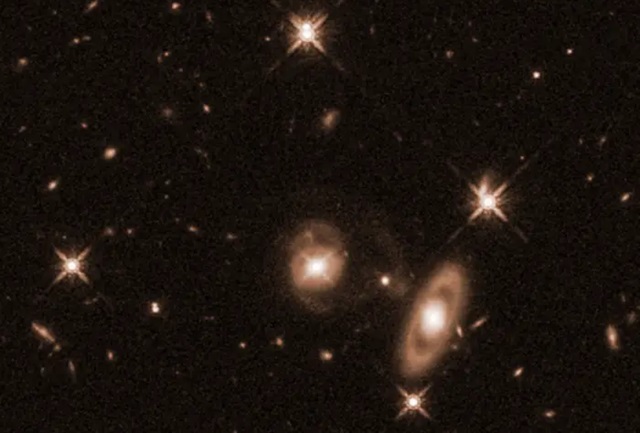The night sky has long guided humanity’s journeys—from ancient sailors navigating uncharted seas to the precision of modern GPS. Yet beyond the stars, the United States Navy turns to the cosmic lighthouses of the universe: quasars. These enigmatic, distant galaxies harbor supermassive black holes encircled by searing, swirling disks of gas that unleash powerful jets of energy. Building on the groundbreaking 2020 discovery of newborn jets in several quasars, Olivia Achenbach, an ambitious aspiring naval officer from the United States Naval Academy, has harnessed NASA’s Hubble Space Telescope to uncover astonishing properties of one quasar in particular: J0742+2704. Her work shines a new light on these celestial beacons and their untold mysteries.
“The biggest surprise was seeing the distinct spiral shape in the Hubble Space Telescope images. At first I was worried I had made an error,” said Achenbach, who made the discovery during the course of a four-week internship.
“We typically see quasars as older galaxies that have grown very massive, along with their central black holes, after going through messy mergers and have come out with an elliptical shape,” said astronomer Kristina Nyland of the Naval Research Laboratory, Achenbach’s adviser on the research.
“It’s extremely rare and exciting to find a quasar-hosting galaxy with spiral arms and a black hole that is more than 400 million times the mass of the Sun — which is pretty big — plus young jets that weren’t detectable 20 years ago,” Nyland said.
This unusual quasar is part of an ongoing debate among astronomers about the origins of quasar jets. These jets play a crucial role in galaxy evolution, as they can inhibit star formation. While some astronomers believe that major galaxy mergers trigger these jets—as the merging material funnels heated gas towards the combined black holes—the existence of spiral galaxy quasars like J0742+2704 suggests alternative mechanisms for jet formation.
While J0742+2704 has maintained its spiral shape, the Hubble image does show intriguing signs of its potential interaction with other galaxies. One of its arms shows distortion, possibly a tidal tail.
“Clearly there is something interesting going on. While the quasar has not experienced a major disruptive merger, it may be interacting with another galaxy, which is gravitationally tugging at its spiral arm,” said Nyland.




